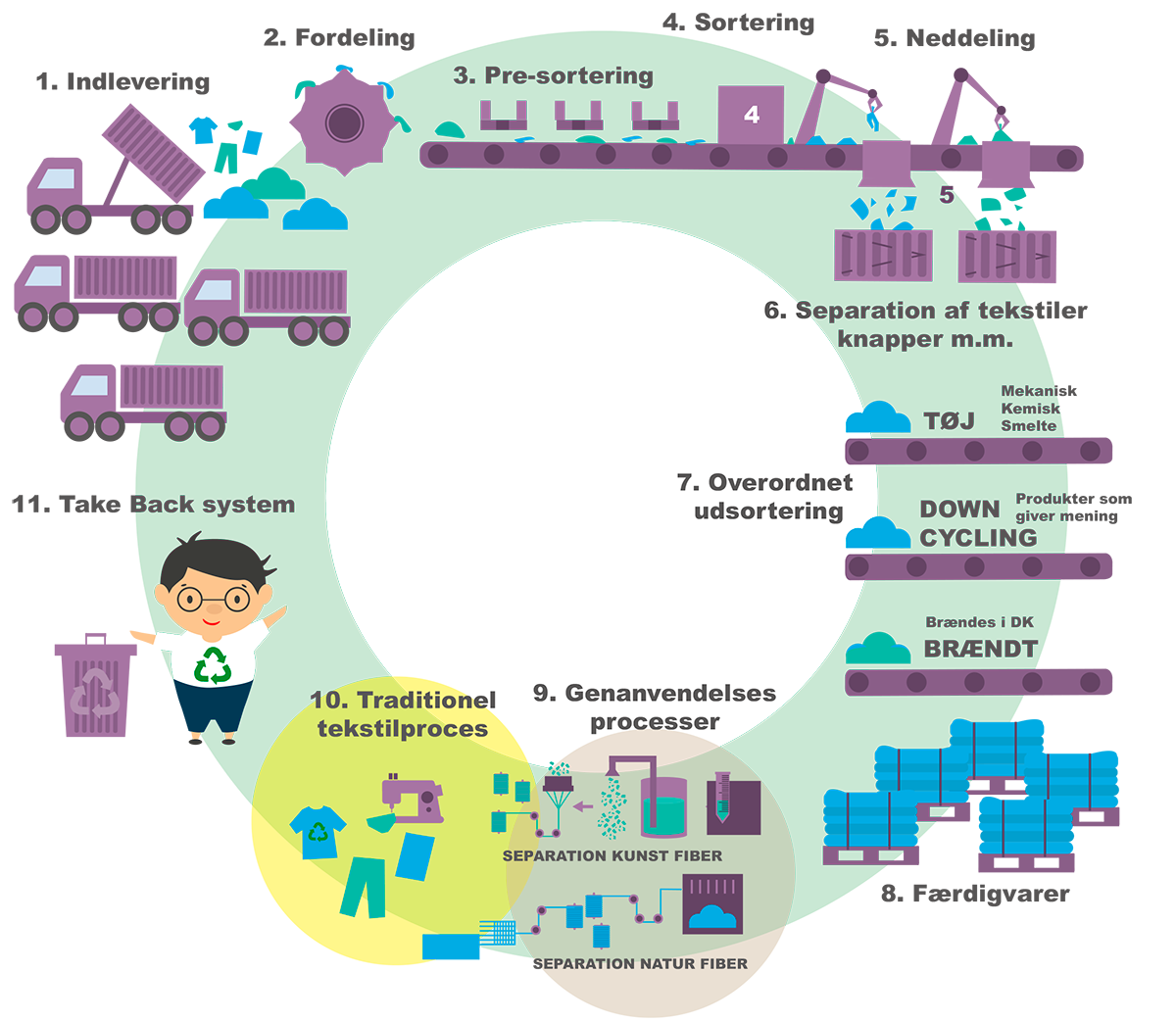In essence, the circular process of mechanically recycling clothes and textiles involves the following steps:
1. Submission of textile waste
2. Sorting (separating recyclable clothing)
3. Automated sorting by material type and color
4. Shredding
5. Carding into open fibers
6. Spinning of new yarns
7. Manufactoring of new fabrics
8. Production of new clothing
There will also be a portion of textile waste that is NOT suitable for mechanical recycling, which can instead undergo chemical recycling or other processes such as upcycling or downcycling.
Read more about each step in more detail below the illustration.


